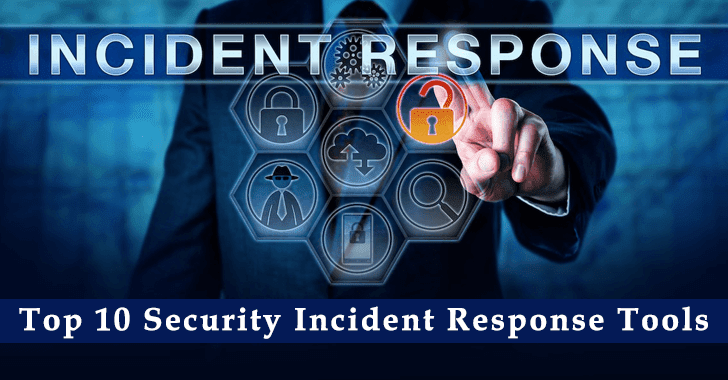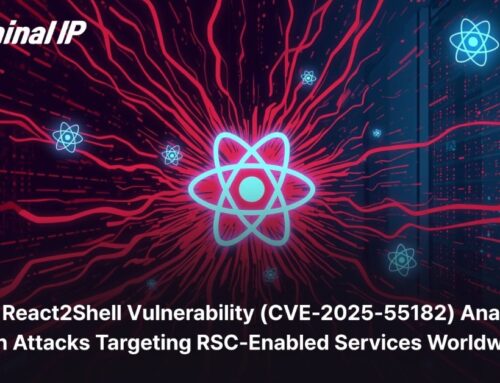
Top 15 Best Security Incident Response Tools In 2025
Unmasking Cyber Threats: The Imperative of Robust Incident Response in 2025
The digital landscape of 2025 presents an increasingly complex and hostile environment for businesses and organizations. Despite significant investments in cybersecurity infrastructure and a burgeoning pool of security expertise, the frequency and sophistication of cyberattacks continue their upward trajectory. Our ever-growing reliance on internet-driven operations means that the stakes for data breaches and service disruptions have never been higher. As referenced by Cybersecuritynews.com, incident response tools, often synonymous with incident management software, are no longer a luxury but a fundamental necessity for organizational resilience. They represent the proactive and reactive backbone of any comprehensive security strategy, enabling rapid detection, containment, eradication, and recovery from malicious activities.
The Evolving Threat Landscape
The proliferation of advanced persistent threats (APTs), ransomware-as-a-service (RaaS), and sophisticated phishing campaigns necessitates a dynamic and adaptive defense. Attackers constantly refine their methodologies, exploiting new vulnerabilities and leveraging automation to scale their operations. For instance, the ongoing exploitation of vulnerabilities like those observed in 2023, such as CVE-2023-38831 impacting WinRAR, underscores the persistent need for vigilant patching and robust detection mechanisms. The speed at which an organization can detect, analyze, and neutralize a threat directly correlates with the financial and reputational damage incurred. Therefore, equipping security teams with the right incident response tools is paramount to minimizing impact and ensuring business continuity.
Key Components of an Effective Incident Response Program
A well-structured incident response program transcends mere tool acquisition; it embodies a holistic approach encompassing planning, preparation, execution, and post-incident analysis. Essential components include:
- Preparation: Developing comprehensive incident response plans, defining roles and responsibilities, and conducting regular training and simulations.
- Detection & Analysis: Identifying security incidents, collecting relevant data, and analyzing the scope and nature of the attack.
- Containment: Isolating affected systems and networks to prevent further compromise.
- Eradication: Removing the threat and addressing root causes.
- Recovery: Restoring affected systems and data to normal operation.
- Post-Incident Activity: Conducting lessons learned, improving processes, and updating security policies.
Each phase benefits immensely from specialized tools designed to automate, streamline, and enhance the capabilities of security analysts.
Top 15 Best Security Incident Response Tools In 2025
While the specific ranking can vary based on organizational needs and infrastructure, the following categories and examples represent leading solutions in the incident response space for 2025. These tools empower security teams to navigate the complexities of modern cyber threats and facilitate a swift, effective response.
1. Security Information and Event Management (SIEM) Solutions: These platforms aggregate and analyze log data from various sources across an organization’s IT infrastructure, providing centralized visibility and threat detection capabilities. They are crucial for early warning and correlation of events.
- IBM QRadar: A robust SIEM offering advanced analytics, threat intelligence, and user behavior analytics.
- Splunk Enterprise Security: Known for its powerful data indexing and search capabilities, enabling deep dives into security events.
2. Endpoint Detection and Response (EDR) Tools: EDR solutions monitor endpoint activities in real-time, detect suspicious behavior, and provide immediate response capabilities, including isolation and remediation.
- CrowdStrike Falcon: Leverages cloud-native architecture for superior threat detection and prevention at the endpoint.
- SentinelOne Singularity Platform: Offers AI-powered autonomous threat prevention, detection, and response.
3. Security Orchestration, Automation, and Response (SOAR) Platforms: SOAR tools automate and orchestrate security operations, improving incident response efficiency by reducing manual tasks and accelerating remediation workflows.
- Palo Alto Networks Cortex XSOAR: Combines security orchestration, automation, case management, and threat intelligence management.
- Swimlane: A low-code security automation platform designed to centralize and automate security operations.
4. Network Detection and Response (NDR) Solutions: NDR tools monitor network traffic for anomalies, behavioral patterns, and known attack signatures, providing visibility into network-level threats.
- Vectra AI: Utilizes AI to detect and triage threats in real-time across cloud, data center, and enterprise networks.
- Darktrace: Employs AI and machine learning to detect subtle threats by understanding normal network behavior.
5. Threat Intelligence Platforms (TIPs): TIPs aggregate and analyze threat data from diverse sources, providing actionable intelligence to help organizations understand new threats and improve their defensive posture.
- Anomali ThreatStream: Delivers curated threat intelligence, enabling proactive defense.
- Recorded Future: Offers real-time threat intelligence through advanced analytics and natural language processing.
6. Digital Forensics and Incident Response (DFIR) Suites: These comprehensive suites provide tools for data acquisition, analysis, and reporting, essential for in-depth incident investigation.
- Magnet AXIOM: A powerful digital forensics platform for collecting, analyzing, and reporting on evidence from various sources.
- EnCase Endpoint Investigator: Specializes in collecting and preserving digital evidence from endpoints for internal investigations and litigation.
7. Vulnerability Management Solutions: While not direct incident response tools, these are critical for proactive security. They identify and prioritize vulnerabilities, reducing the attack surface and preventing many incidents.
- Tenable Nessus: A widely used vulnerability scanner providing comprehensive vulnerability assessments.
- Qualys Cloud Platform: Offers a suite of security and compliance solutions, including vulnerability management.
8. Secure Email Gateways (SEGs): Critical for preventing phishing and malware delivery via email, a primary attack vector.
- Proofpoint Email Protection: A leading solution for advanced threat protection against email-borne threats.
9. Cloud Security Posture Management (CSPM): Vital for securing cloud environments, identifying misconfigurations that could lead to breaches.
- Orca Security: Provides continuous cloud security and compliance for AWS, Azure, and GCP without agents.
10. Security Awareness Training Platforms: Human error remains a significant vulnerability. These platforms educate employees on cybersecurity best practices, reducing the risk of social engineering attacks that could lead to incidents.
- KnowBe4: Offers Security Awareness Training and simulated phishing attacks.
Remediation Actions and Proactive Security
While the listed tools are instrumental in incident response, their effectiveness is amplified by robust remediation actions and a proactive security posture. Should a breach occur (e.g., related to an exploited vulnerability like CVE-2023-28252 in Microsoft products), immediate steps for remediation include:
- Isolation of Affected Systems: Disconnecting compromised devices or segments from the network.
- Patching and Configuration Management: Applying necessary security patches (especially for publicly known vulnerabilities) and correcting misconfigurations.
- Malware Removal: Using EDR tools and forensic techniques to thoroughly remove malicious software.
- Password Resets & Credential Revocation: For all potentially compromised accounts.
- Data Restoration: From clean backups, if data integrity was compromised.
- Enhanced Monitoring: Intensifying surveillance of affected systems and networks post-recovery.
- Incident Post-Mortem: Conducting a thorough review to identify root causes and improve future defenses.
Proactive measures include regular vulnerability scanning, penetration testing, employee security awareness training, and maintaining up-to-date incident response plans.
Conclusion
The persistent escalation of cyber threats makes the adoption of advanced incident response tools an undeniable necessity for organizations aiming to safeguard their digital assets and maintain operational continuity. By strategically implementing and integrating solutions from SIEM to SOAR, EDR to NDR, and continuously investing in threat intelligence and human capital, businesses can build a resilient defense. The right tools, combined with well-defined processes and a skilled security team, form the bedrock of an effective incident response capability, crucial for navigating the complex cybersecurity challenges of 2025 and beyond.





